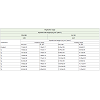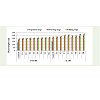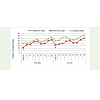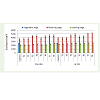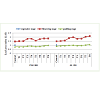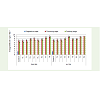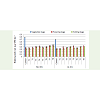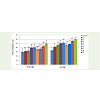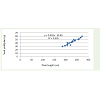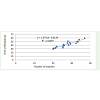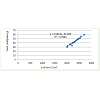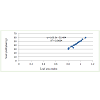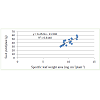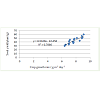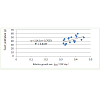Growth Efficiency and Yield of Pigeonpea (Cajanus cajan L.) as Affected by Foliar Application of Mineral Nutrients
Gagandeep Kaur1*, Navita Ghai1, Jagmeet Kaur2 and Sarvjeet Singh2
Corresponding author: Dr. Gagandeep Kaur, Department of Botany, Punjab Agricultural University, Ludhiana – 141001,India;E-mail: gkdhaliwal123@gmail.com
1Department of Botany, Punjab Agricultural University, Ludhiana - 141001
2Department of Plant Breeding and Genetics, Punjab Agricultural University, Ludhiana – 141001
Citation: Kaur G, Ghai N, Kaur J, Singh S. Growth Efficiency and Yield of Pigeonpea (Cajanus cajan L.) as Affected by Foliar Application of Mineral Nutrients. J Plant Sci Res. 2015;2(2): 130.
Copyright © 2015 Kaur G, et al. This is an open access article distributed under the Creative Commons Attribution License, which permits unrestricted use, distribution, and reproduction in any medium, provided the original work is properly cited.
Journal of Plant Science & Research | ISSN: 2349-2805 | Volume: 2, Issue: 2
Submission: 04/07/2015; Accepted: 10/08/2015; Published: 15/08/2015
Abstract
The study was conducted to determine the effect of foliar application of mineral nutrients on growth attributes of two pigeonpea varieties (PAU 881 and AL 201) for two successive seasons (2012-2013). Both the varieties showed identical pattern of results for plant height, number of branches, leaf area, leaf area index (LAI), specific leaf weight (SLW), crop growth rate (CGR) and relative growth rate (RGR). All the treatments of mineral nutrients (1mM CaCl2, 2mM CaCl2, 0.5% KNO3, 1% KNO3, 0.1% MgCl2, 0.2% MgCl2, 1% urea and 2% urea) had positive effect on growth attributes. Amongst all the treatments, 2% urea application caused maximum increase in growth attributes viz., plant height, number of branches, leaf area, LAI, SLW, CGR and RGR. These growth attributes showed significant positive correlation with yield. Thus, the application of mineral nutrients improved yield of pigeonpea varieties through enhancement of various growth attributes.
Keywords: Pigeonpea; Mineral nutrients; Growth attributes
Introduction
Pigeonpea is a multipurpose crop, used for fodder, soilfertility enhancement, soil erosion control and for fuel. Minor usesinclude indigenous medicinal practices which generally involvea pain relieving effect [1]. However, yield of pigeonpea remainslow due to excessive vegetative growth, inderminate growthhabit and poor source-sink relationship [2]. Nutrient elementsare needed in relatively very small quantities for adequateplant growth and production. Their deficiency may cause greatdisturbances in the physiological and metabolic processes,involved in the plant [3]. Nitrogen is a chlorophyll component,it promotes vegetative growth and is a necessary component ofvitamins that aids in production and use of carbohydrates as well as influence energy reactions in plants [4]. K is essential for manyphysiological processes, such as photosynthesis, translocation ofphotosynthates into sink organs, maintenance of turgidity andactivation of enzymes [5]. Calcium is another important mineralnutrient that plays a key role in the structure of cell walls and cellmembranes, fruit growth and development as well as general fruitquality [6]. Further, magnesium plays specific role in chlorophyllformation, activation of enzymes, synthesis of proteins andenergy transfer [7]. Application of nutrients through foliar sprayat appropriate stages of growth becomes important for theirutilization and better performance of crop [8]. Urea is one ofthe most widely used foliar N-fertilizers, characterized by highleaf penetration rate and low cost and most plants can absorb it rapidly and hydrolyse in the cytosol [9]. Foliar application ofurea with recommended dose of fertilizer could give higher seedyield in niger [10]. Similarly, foliar application of Ca(NO3)2 andKNO3 enhanced the growth and yield attributes of rice plant [11].Further, Saad et al. reported that foliar application of magnesiumsulphate enhanced the yield of faba bean [12]. Thus, the presentinvestigation was planned to study the influence of foliarapplication of mineral nutrients on some of the growth attributesof pigeonpea [Table 1] [Figure 1].
Table 1: Effect of foliar application of various mineral nutrients on Specific leaf weight (mg cm -2 plant-1) in pigeonpea varieties at different growth stages.
Figure 1: Effect of foliar application of mineral nutrients on plant height (cm) of pigeonpea varieties at different growth stages.
Material and Method
This experiment was conducted in Punjab AgriculturalUniversity, Ludhiana during Kharif season of 2012-13 and 2013-14. The soil was sandy loam in texture with 318.7 kg ha-1ofN, 268 kg ha-1of K, 1.6 meq/lt of Ca and 1.0 meq/lt of Mg. Theexperiment consisting of two pigeonpea varieties (PAU 881 andAL 201) having one control and eight treatments was laid out inrandomized block design with three replications. The treatments:Control (water), T1 (1mM CaCl2), T2 (2mM CaCl2), T3 (0.5% KNO3),T4 (1% KNO3), T5 (0.1% MgCl2), T6 (0.2% MgCl2), T7 (1 % urea)and T8 (2 % urea) were applied as foliar spray at green floral budstage of inflorescence followed by another spray after 2 days.Five plants from each replication of each treatment were takenfor recording the following traits: Plant height (cm), Numberof branches, Leaf area (cm2 plant-1), Leaf area index, Specificleaf weight (mg cm-2 plant-1), Crop growth rate (g m-2 day-1) andRelative growth rate (g g-1 DW day-1) [Figure 2-5]. Leaf area wascalculated by graph paper method and then samples were driedat 70 °C till weight stability in an electric oven and then weighed.These traits were calculated using following formulae:
Figure 2: Effect of foliar application of mineral nutrients on number of branches/plant in pigeonpea varieties at different growth stages.
Figure 3: Effect of foliar application of mineral nutrients on leaf area (Cm-2) of pigeonpea varieties at different growth stages.
Figure 4: Effect of foliar application of mineral nutrients on leaf area index of pigeonpea varieties at different growth stages.
Figure 5: Effect of foliar application of mineral nutrients on crop growth rate (CGR) (g m-2 day-1) in pigeonpea varieties at different growth stages.



Where, W1 and W2 = crop dry weight at the beginning and atthe end of the interval, t1 and t2 = corresponding days, SA= soilarea occupied by the plant during each sampling

Where dW = increase in dry matter in time ‘t’, t = time intervalin days, W0 = initial dry matter in mg
Yield: Five plants were selected at random from eachtreatment for recording seed yield per plant at maturity andweighted using an electric balance.
Results
Plant height and number of branches
Plant height and number of branches increased with cropage and changes in these traits with different treatments wereapparent at all the growth stages of both the varieties. All thetreatments of mineral nutrients caused significant increasein number of branches and plant height in both the varietiesat all developmental stages. Maximum enhancement in thesetraits were observed with 2% urea application which wasapproximately 13% in plant height and 58% in number ofbranches at flowering stage of development as compared tocontrol. This increase with 2% urea application, at podding stagewas approximately 22% in plant height and 40% in number ofbranches. Increase in plant height and number of branches couldbe the result of increased metabolic and divisional activities in the shoot apical meristems in response to nutrients applications. Ourresults are in close agreement with those obtained by Parimala etal. in chickpea. According to our results, applications of 2% urearecorded maximum plant height and number of branches perplant. This might be due to more availability of nitrogen, whichplays a vital role in cell division.
Leaf characteristics
Leaf area is considered to be one of the photosyntheticdeterminants in crop plants and in the present study, it increasedgradually from vegetative to flowering stage and decreasedthereafter due to senescence and ageing of leaves. Mineralnutrient treatments significantly enhanced the leaf area and LAIat all the stages of development in both the varieties. Maximumincrease in leaf area and LAI was noted with 2% urea applicationwhich was 26% at flowering and 19% at podding stage of development as compared to control. In the present study,application of different mineral nutrients increased leaf area andleaf area index obtained in our results is concurrent with resultsof Govindan et al. [14]. Where a significant increase in LAI in greengram with the foliar spray of KNO3 (1%) or KCl (1%) and theircombination was reported. Similary, Khalilzadeh et al. observedhigher leaf area in urea treated plants of mungbean [15]. In ourstudy, magnesium and calcium treatments also increased leafarea and leaf area index and these results are in good agreementwith results of Howladar et al. in Pisum sativum [16].
SLW also showed a similar pattern as that of LA and LAI. Atpodding stage, maximum increase in SLW was observed with2% urea application in PAU881 i.e. 27.49% more as compared tocontrol while in AL201 maximum increase was noticed with 1%urea treatment i.e. 23.72% over the control plants. Specific leafweight is measure of leaf thickness and positively correlated with leaf photosynthesis. Thicker leaves would have more number ofmesophyll cells with high density of chlorophyll and therefore,have a greater photosynthetic capacity than thinner leaves [17].
Growth efficiency
The average daily increment in CGR is an important usefultool for estimating production efficiency, enabling comparisonbetween the treatments. Different treatments of mineral nutrientssignificantly enhanced the CGR over controls at flowering stage but this increase was non-significant at podding stage. Amongthe treatments, maximum increase in CGR was observed with2% urea application which was about 22% increase at floweringstage and about 28% at podding stage in both the varieties ascompared to their respective controls. Mir et al. opined thatthe aspects of interaction of phytohormones and nutrients ongrowth and development of crop plants cause positive responseson plant growth rate, relative growth rate, crop growth rateand net assimilation rate [18]. Surendar et al. also studied the physiological effects of nitrogen with foliar spray of urea on cropgrowth attributes and yield of black gram [19]. They observedthat the foliar spray of urea significantly expressed the highervalues in growth attributes viz., leaf area index, crop growth rate,net assimilation rate and specific leaf weight by showing higheraccumulation of total dry matter production with increased yield.
Mineral nutrients application significantly enhanced the RGR in both the varieties at all the stages of development as comparedto their respective controls. At flowering stage, maximumenhancement in RGR was noticed with 2% urea which was 21.71(PAU 881) and 25.71 (AL 201) per cent high over controls. At thisstage, all the treatments significantly enhanced RGR over controlsbut there was non-significant difference among the treatments.However, at podding stage, significant difference in RGR wasobserved among the treatments and controls. At this stage maximum RGR (0.454 g g-1dw day-1in PAU 881and 0.414 g g-1dwday-1 in AL 201) was obtained with 2% urea which was 27.69(PAU 881) and 23.17 (AL 201) per cent high over their controls.Increase in RGR in treated plants can be attributed to increasedleaf longevity in these plants as compared to their controls.This could also be due to increased photosynthetic efficiency byretaining more chlorophyll content and efficient translocation.These results are supported by the finding of Gowthami et al.in soybean [20]. They found higher RGR in potassium treatedplants and reported that it might be due to high leaf area andcrop growth rate in treated plants as reflected through total drymatter accumulation.
Seed yield/plant
An increase in seed yield/plant was recorded followingmineral nutrients application and maximum increase wasobserved with 2% urea application which was 1.66 (PAU 881)and 1.77 (AL 201) fold over controls followed by 1% urea (1.45fold in PAU 881 and 1.65 fold in AL 201). Almost all the mineralnutrient treatments significantly enhanced seed yield per plantin both the varieties (except for CaCl2 in PAU 881 where, a nonsignificantincrease in seed yield/plant was observed). Gowthamiet al. also observed an increase in seed yield/plant with urea andDAP application in soybean [21]. According to Jones et al. thewider and flat leaf surface enables the plant to absorb maximumlight [22]. The improvement in leaf characteristics (LA and LAI) asobserved in our study might have contributed towards enhancedproduction of assimilates through improved photosyntheticefficiency (as SLW was also more in treated plants). Thisimprovement in leaf characteristics can be considered as mainfactor responsible for increased yield in pigeonpea.
Correlation studies
The final yield of a crop is the cumulative effect of variousgrowth attributes and the treatments which manipulate thesefavourable parameters could result in the positive relationshipresulting in higher productivity. The relationship of plant height,number of branches, leaf area, leaf area index, specific leaf weight,crop growth rate and relative growth rate were correlated withfinal seed yield and are presented in Figure 6-14. These resultsrevealed that the plant height, number of branches, leaf area, leafarea index, specific leaf weight, crop growth rate and relativegrowth rate were significantly and positively correlated withyield.
Figure 6: Effect of foliar application of mineral nutrients on relative growth rate (RGR) (g g-1 DW day-1) in pigeonpea varieties at different growth stages.
Figure 7: Effect of foliar application of various mineral nutrients on seed weight/plant (grams) in pigeonpea varieties. Error bars denote mean ± SE of threereplicates. Bars with different small letter(s) denote significant differences in treatments from their respective controls at P < 0.05: analysed by Dunken’s post-hoctest.
Conclusion
Thus it can be concluded that the mineral nutrients especiallynitrogen and potassium as urea and KNO3, respectively, can beused for improving growth efficiency and ultimately yield inpigeonpea.
Acknowledgement
We would like to thank Department of Science & Technology,New Delhi, India for their financial support to conduct this studythrough INSPIRE programme.
References
- Pahwa K, Ghai N, Bedi S (2013) Pigeonpea: A potential multipurpose crop. Rashtriya krishi 8: 62-64.
- Babaeian M, Piri I, Tavassoli A, Esmaeilian Y, Gholami H (2011) Effect of water stress and micronutrients (Fe, Zn and Mn) on chlorophyll fluorescence, leaf chlorophyll content and sunflower nutrient uptake in Sistan region. African J Agric Res 6: 3526-3531.
- Chandrasekhar CN, Bangarusamy U (2003) Maximizing the yield of mung bean by foliar application of growth regulating chemicals and nutrients. Madras Agric J 90: 142-145.
- Sara S, Morad M, Reza CM (2013) Effects of seed inoculation by Rhizobium strains on Chlorophyll content and protein percentage in common bean cultivars (Phaseolus vulgaris L.). Int J Biosciences 3: 1-8.
- Mengel K, Kirkby EA (2001) Principles of Plant Nutrition. 5th ed., Kluwer Academic Publishers, Dordrecht.
- Shukla AK (2011) Effect of foliar application of calcium and boron on growth, productivity and quality of Indian gooseberry (Emblica officinalis). The Indian J Agric Sci 81: 628-632.
- Thalooth AT, Tawfik MM, Mohamed HM (2006) A Comparative Study on the Effect of Foliar Application of Zinc, Potassium and Magnesium on Growth, Yield and Some Chemical Constituents of Mungbean Plants Grown under Water Stress Conditions. World Journal of Agric Sci 2: 37-46.
- Anadhakrishnaveni S, Palchamy A, Mahendran S (2004) Effect of foliar spray of nutrients on growth and yield of greengram (Phaseolus radiatus). Legume Res 27:149-150.
- Witte CP, Tiller SA, Taylor MA, Davies HV (2002) Leaf urea metabolism in potato. Urease activity profile and patterns of recovery and distribution of 15 N after foliar urea application in wild-type and urease-antisense transgenics. Plant Physiol 128: 1129-1136.
- Dalei BB, Kheroar S, Mohapatra PM, Panda S, Deshmukh MR (2014) Effect of Foliar Sprays on Seed Yield and Economics of Niger [Guizotia abyssinica (L.f.) Cass]. J Agric Sci 6: 143-147.
- Kundu C, Sarkar RK (2009) Effect of foliar application of potassium nitrate and calcium nitrate on performance of rainfed lowland rice (Oryza sativa L). Indian J Agronomy 54: 428-432.
- Saad AOM, El-Kholy MA (2000) Response of some faba bean to phosphorus and magnesium fertilization. Egypt J Agronomy 22: 19-32.
- Parimala K, Anitha G, Reddy AV (2013) Effect of Nutrient Sprays on Yield and Seedling Quality Parameters of Chickpea (Cicer Arietinum L.). Plant Archives 13: 735-737.
- Govindan K, Thirumurugan V (2000) Response of green gram to foliar nutrition of potassium. Journal of Maharashtra Agricultural Universities 25: 302-303.
- Khalilzadeh R, Tajbakhsh M, Jalilian J (2012) Growth characteristics of mungbean (Vigna radiate L.) affected by foliar application of urea and bio-organic fertilizers. Int J Agric Crop Sci 4: 637-642.
- Howladar SM, Osman AS, Rady MM, Al-Zahrani HS (2014) Magnesium Foliar Application and Phosphorien Soil Inoculation Positively Affect Pisum sativum L. Plants Grown on Sandy Calcareous Soil. Int J Biol Food Vet and Agricultural Eng 8: 428-432.
- Craufurd PC, Wheeler TR, Ellis RH, Summer RJ, Williams JH (1999) Effect of temperature and water deficit on water use efficiency, carbon isotope discrimination and specific leaf area in peanut. Crop Sci 39: 136-142.
- Mir MR, Mobin M, Khan NA, Bhat MA, Lone NA, et al. (2010) Crop Responses to interaction between plant growth regulators and Nutrients. J Physiol 2: 9-19.
- Surendar KK, Vanagamudi SVM, Vijayaraghavan H (2013) Physiological Effects of Nitrogen and Growth Regulators on Crop Growth Attributes and Yield of Black Gram (Vigna mungo L.). Bull Env Pharmacol Life Sci 2: 70-76.
- Gowthami P, Rama Rao G (2014) Effect of foliar application of potassium, boron and zinc on growth analysis and seed yield in soybean. Int J Food Agric Vet Sci 4: 73-80.
- Kumar CV, Vaiyapuri K, Amanullah MM, Gopalaswamy G (2013) Influence of foliar spray of nutrients on yield and economics of soybean (Glycine max L. Merill). J Biol Sci 13: 563-565.
- Jones RH, McLeod KW (1990) Growth and photosynthetic responses to a range of light environments in Chinese tallow tree and Carolina ash seedlings. Forest Sci 36: 851-862.

